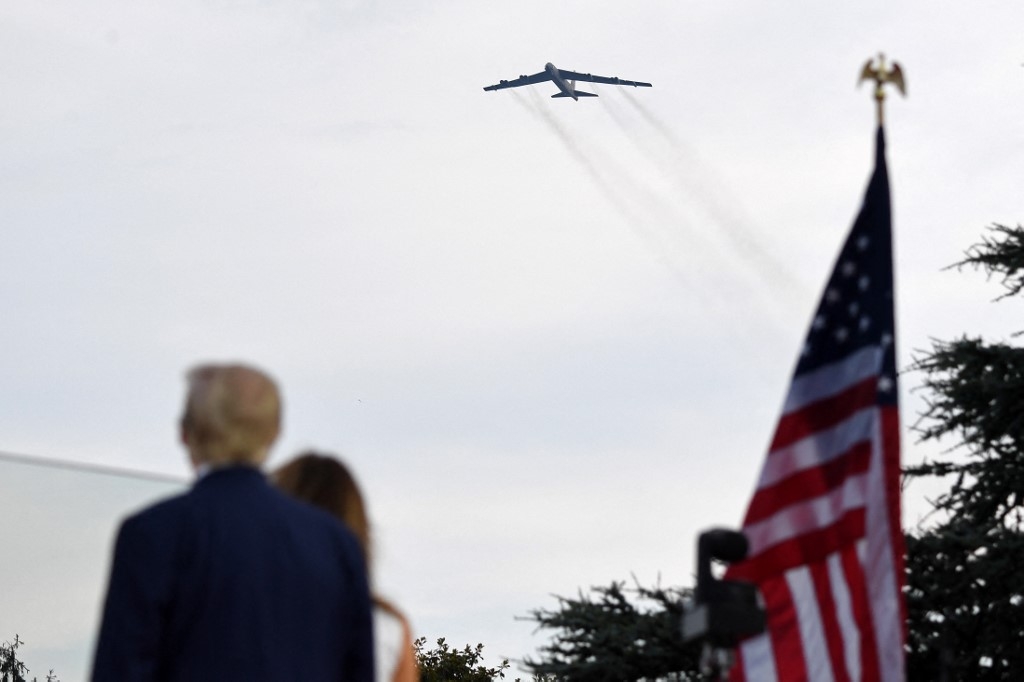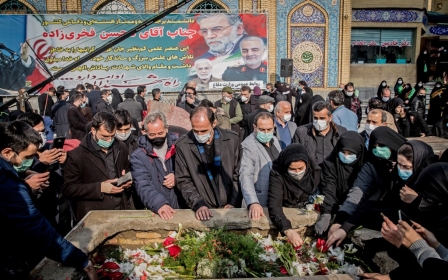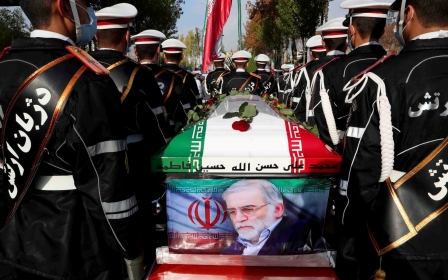US sends second show-of-force warplane mission over Gulf as tensions flare

The United States conducted a show-of-force air mission over the Gulf on Thursday, the second such long-range flight during the past three weeks amid flaring tensions with Iran.
Two B-52 bombers flew near Iranian air space on short-notice missions, General Kenneth McKenzie Jr, head of the US military’s Central Command, said in a statement on Thursday.
The United States frequently uses show-of-force flights to deter attacks in the Middle East and Asia and underscore American airpower, but launching two of such missions within weeks of each other is unusual.
'We do not seek conflict'
In Thursday's statement, McKenzie made it clear that the US's goal was to send a message to Iran, saying that while Washington does "not seek conflict", it is "postured and committed to respond to any contingency or in opposition to any aggression".
New MEE newsletter: Jerusalem Dispatch
Sign up to get the latest insights and analysis on Israel-Palestine, alongside Turkey Unpacked and other MEE newsletters
"Potential adversaries should understand that no nation on earth is more ready and capable of rapidly deploying additional combat power in the face of any aggression," the general said.
The warplanes were sent on an impromptu 36-hour round-trip mission from Barksdale Air Force Base in Louisiana to an area just outside Iranian air space, where the planes flew around for two hours before returning home.
The multinational mission included support from Saudi Arabia, Qatar and Bahrain, the New York Times reported.
"The ability to fly strategic bombers halfway across the world in a non-stop mission, and to rapidly integrate them with multiple regional partners demonstrates our close working relationships and our shared commitment to regional security and stability," McKenzie said in Thursday's statement.
The previous mission took place on 21 November, with the two planes taking off from Minot Air Force Base in North Dakota.
"Bomber task force missions highlight the robust and varied USAF capabilities that can be made rapidly available," Lieutenant General Greg Guillot, air forces central commander, said at the time.
Guillot stressed the need to be able to "to quickly move forces into, out of and around" the Gulf region.
"These missions help bomber aircrews gain familiarity with the region’s airspace and command and control functions and allow them to integrate with the theater’s US and partner air assets, increasing the combined force’s overall readiness," he said.
Preparing for retaliation
Before Thursday's mission, a senior military official told a small group of reporters that American intelligence analysts had detected "planning going on" - including preparations for possible rocket strikes or worse - by Iran and the Shia militias in Iraq that it supports, the NYT said.
This all comes as tensions in the region are strained over the recent assassination of top Iranian nuclear scientist Mohsen Fakhrizadeh. Iran has blamed the US and Israel for coordinating the assassination.
Although Israel has not commented on Fakhrizadeh's killing, a senior official in the Trump administration told US media that the Mossad, Israel's external intelligence agency, was behind the operation. The US has denied involvement.
The anniversary of the US air strike that killed top Iranian general Qassem Soleimani in Baghdad, which brought the two countries to the brink of war, is also just weeks away.
As Iran has vowed to avenge both assassinations, the US and Israel have stepped up their coordination in preparation for potential retaliation.
US President Donald Trump's administration has ordered the scaling down of its presence in Iraq and the Middle East.
The outgoing US administration has called home almost half of its diplomatic staff from the US embassy in Baghdad as a temporary measure, but it remains unclear if the embassy will be more fully staffed in the future.
To secure and protect the withdrawal of US forces from Iraq and Afghanistan, US aircraft and heavy bombers have already been stationed in the Gulf.
Meanwhile, a senior Israeli security official told Reuters last week that "the Iranians are looking for 'prestige' targets … that can be hit with low casualties, meaning - they may hope - fewer chances of escalation".
Middle East Eye delivers independent and unrivalled coverage and analysis of the Middle East, North Africa and beyond. To learn more about republishing this content and the associated fees, please fill out this form. More about MEE can be found here.






